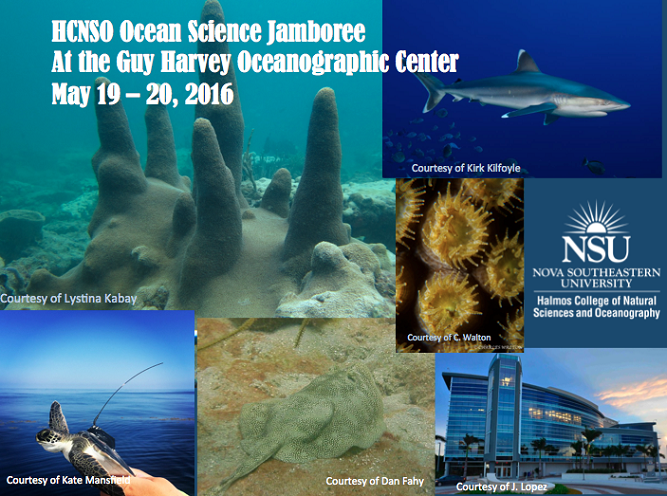Global Population Genetic Dynamics of a Highly Migratory Apex Predator, the Tiger Shark (Galeocerdo cuvier)
Location
Guy Harvey Oceanographic Center Facility
Start
5-19-2016 9:15 AM
End
5-19-2016 9:30 AM
Abstract
Knowledge of genetic connectivity dynamics in the world’s large-bodied, highly migratory, apex predator sharks across their global ranges is limited. One such species, the tiger shark (Galeocerdo cuvier), occurs worldwide in warm-temperate and tropical waters, demonstrates remarkably diverse habitat use (very nearshore to pelagic), and with its size and generalist diet can structure marine ecosystems through top-down processes. The tiger shark’s behavioral traits predict the potential for broad scale genetic connectivity. We used nuclear microsatellites and mitochondrial control region (CR) and cytochrome oxidase I gene sequences to investigate the phylogeography and global population structure of this exploited, phylogenetically enigmatic shark. While all markers showed considerable genetic differentiation between tiger sharks from the western Atlantic and Indo-Pacific ocean basins, mitochondrial DNA additionally revealed high levels of intra-basin matrilineal population structure, suggesting female philopatry and sex-biased gene flow. All three genetic markers also suggested the presence of North vs. South western Atlantic population structure, and the isolation of tiger sharks sampled from Hawaii from other surveyed global locations. Coalescent- and genetic distance-based estimates of divergence from CR sequences were largely congruent, suggestive of a separation of Indo-Pacific and western Atlantic tiger sharks less than 1 million years ago. Mitochondrial haplotype relationships suggested the western South Atlantic Ocean was likely a historical connection for inter-ocean basin linkages via dispersal around South Africa. Together, the results reveal unexpectedly high levels of population structure in a cosmopolitan, highly migratory and behaviorally generalist ocean predator, calling for management and conservation on smaller than anticipated spatial scales.
Global Population Genetic Dynamics of a Highly Migratory Apex Predator, the Tiger Shark (Galeocerdo cuvier)
Guy Harvey Oceanographic Center Facility
Knowledge of genetic connectivity dynamics in the world’s large-bodied, highly migratory, apex predator sharks across their global ranges is limited. One such species, the tiger shark (Galeocerdo cuvier), occurs worldwide in warm-temperate and tropical waters, demonstrates remarkably diverse habitat use (very nearshore to pelagic), and with its size and generalist diet can structure marine ecosystems through top-down processes. The tiger shark’s behavioral traits predict the potential for broad scale genetic connectivity. We used nuclear microsatellites and mitochondrial control region (CR) and cytochrome oxidase I gene sequences to investigate the phylogeography and global population structure of this exploited, phylogenetically enigmatic shark. While all markers showed considerable genetic differentiation between tiger sharks from the western Atlantic and Indo-Pacific ocean basins, mitochondrial DNA additionally revealed high levels of intra-basin matrilineal population structure, suggesting female philopatry and sex-biased gene flow. All three genetic markers also suggested the presence of North vs. South western Atlantic population structure, and the isolation of tiger sharks sampled from Hawaii from other surveyed global locations. Coalescent- and genetic distance-based estimates of divergence from CR sequences were largely congruent, suggestive of a separation of Indo-Pacific and western Atlantic tiger sharks less than 1 million years ago. Mitochondrial haplotype relationships suggested the western South Atlantic Ocean was likely a historical connection for inter-ocean basin linkages via dispersal around South Africa. Together, the results reveal unexpectedly high levels of population structure in a cosmopolitan, highly migratory and behaviorally generalist ocean predator, calling for management and conservation on smaller than anticipated spatial scales.


